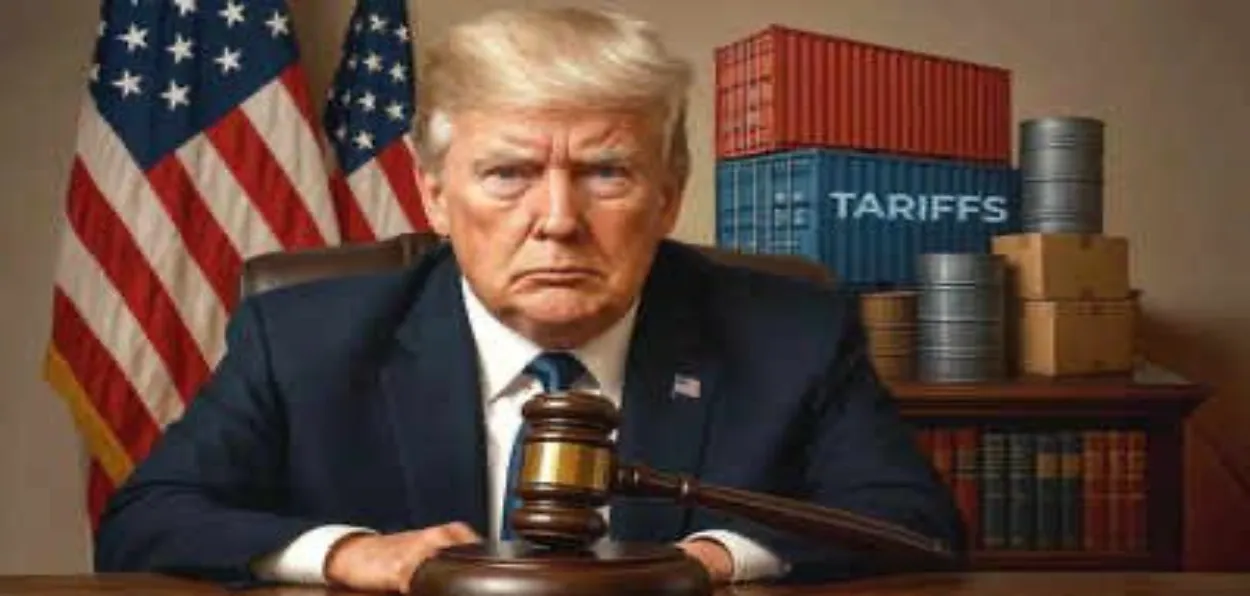
 Rajeev Narayan
Rajeev Narayan
When United States President Donald J Trump threw the 25 percent trade tariffs punch at India, an entire nation cowered, but there remained an intrinsic belief that historical friendship and across-the-table negotiations would save the day. That hope now stands belied, as the US has raised the stakes and announced a further 25 percent ‘penalty’ on India for its import of crude oil from Russia.
With the trade football now registering a staggering 50.0 on the Tariffs Scale, Indian businesses, large and small, are bewildered, concerned, and very worried.
What will be impacted and how badly, especially since the new 50 percent tariffs will be in addition to the existing standard import duty in the US? A cursory look at GTRI figures shows that duties will increase on all sectors and manner of goods, among them organic chemicals (54 percent total duty), carpets (52.9 percent), knitted clothes (63.9 percent), woven garments (60.3 percent), textiles & made-ups (59 percent), diamonds & gold jewellery (52.1 percent), machinery and mechanical appliances (51.3 percent), furniture, bedding & mattresses (52.3 percent), and so on.
In terms of the bludgeoning dollar impact, GTRI said textiles & clothing would be among the worst-hit ($10.3 billion), as also gems and jewellery ($12 billion), electrical and mechanical machinery ($9 billion), shrimp ($2.24 billion), leather and footwear ($1.18 billion) and chemicals ($2.34 billion).
To put the larger picture in perspective, India and the US had a bilateral trade of US$131.8 billion in the last financial year, of which $86.5 billion were exports and $45.3 billion imports, GTRI said.
MSMEs may face a Crisis
For exporters from India, especially those operating in the MSME sector, this is nothing short of a crisis. Businesses already grappling with logistics costs, tightening regulatory scrutiny, and global economic uncertainty now face a collapse of price-competitiveness in the American market.
For instance, textiles and apparel, one of India’s top export sectors supporting 45 million direct and indirect jobs, may find itself priced out of the world’s largest economy. Other impacted sectors, such as chemicals, gems, and jewellery, have traditionally formed the bedrock of India’s labour-intensive export economy. For example, Surat’s diamond and textile industries, Jaipur’s jewellery artisans, and Panipat’s home furnishing units are all heavily dependent on US buyers. Now, with cost mark-ups from the tariffs, US retailers and wholesalers may turn to cheaper source markets such as Vietnam, Bangladesh, or even China, despite the ongoing trade tensions between Washington and Beijing.
Even in high-value sectors like machinery and electronics, where India was making some inroads, the tariff escalation may nullify years of progress. The result is both immediate and long-term—cancelled orders, renegotiated contracts, lost goodwill, and business relocation away from Indian shores.
Why the Additional 25% Tariff?
At the heart of the crisis lies geopolitics cloaked in economic rationale. India’s import of discounted Russian crude oil, which buffered inflationary pressures domestically, has irked the Donald Trump administration. Washington sees India’s energy alignment with Russia as undermining the Western consensus on isolating Moscow, especially in light of the Ukraine war.
India appears to be paying a price for its Russian oil dalliance, and US trade circles bluntly admit this. They say penalising India for its ‘defiance’ is justified and that the Trump-led government is signalling to other allies and partners that “neutrality comes at a price”.
With Europe gradually weaning itself off Russian energy, the US is also under domestic pressure to ensure that other major democracies follow suit. India is high on that list.
However, the logic doesn’t sit well with Indian policymakers, who have often asserted that the country’s foreign policy is ‘multi-aligned’ and not subservient or beholden to pressure from Western nations. “India’s oil purchases are based on economic necessity, not ideology,” they say. The argument, however, is not finding favour, as Washington’s transactional approach to foreign relations under Trump indicates.
Business & Bilateral Ties
The economic implications are massive, but the diplomatic tremor runs deeper. Indian businesses are interpreting the move not as an isolated action but as a message that the US is willing to weaponize tariffs to enforce compliance on foreign policy matters. And that raises uncomfortable questions.
If strategic autonomy becomes punishable with punitive tariffs, does India continue to engage the US as a trusted economic partner? Or does it begin to hedge by deepening ties with BRICS, ASEAN, and the Middle East?
It is learnt that Indian business leaders are urging New Delhi to push for re-engagements with traditional trade allies in South-East Asia, the Gulf, and even Africa, markets where Indian goods are not subject to any adversarial trade pressures.
Retaliation and diversification may be just one route, as India can also opt for calibrated diplomacy before resorting to trade countermeasures. The potential strategies being discussed in Indian policy corridors include high-level talks and WTO channels; seeking preferential access elsewhere; and boosting domestic self-reliance.
The situation also throws fresh focus on India’s need to pivot aggressively toward its Atmanirbhar Bharat initiative, not merely to reduce dependency on foreign markets, but also to increase domestic consumption of home-made goods. Schemes like Production Linked Incentives, Make in India 2.0, and Export Credit Guarantee Corporation need to be revisited for enhanced scope and allocation.
Silver Lining in Diversification
Paradoxically, the ongoing crisis could push India to explore newer and under-tapped export markets. Africa, for instance, remains one of the fastest-growing consumer regions in the world. Latin America offers scope for pharmaceuticals, chemicals, textiles, and two-wheeler exports. And by reducing over-dependence on the US, Indian exporters might discover more resilient revenue streams over the longer term.
Industry captains are ringing the alarm bells as well. The Confederation of Indian Textile Industry said: “Our exports to the US are down 25 percent over last year. This new tariff regime will make it impossible to compete. If immediate redressal is not achieved, we may see closures across the board.” Exporters in Gujarat, Punjab, and Tamil Nadu have also expressed concern that their operations might become unviable. “We don’t have the margins to absorb a 50-percent tariff hike. Our clients are asking us for price revisions, which we cannot do without bleeding losses,” a Ludhiana-based garment exporter said.
India is reeling from the shock of a tariff wall, but this is not the first time it has found itself at the receiving end of American strong-arm tactics. Nor will it be the last. What is required now is a balanced, multi-pronged response, one that asserts India's sovereignty in global affairs, protects its economic interests, and opens up newer doors globally.
ALSO READ: 10 top Muslim IPS officers of India epitomize integrity, dedication
There is an old saying: “A crisis is too good to waste.” If the US tariff threat prompts India to diversify, innovate, and deepen its economic statecraft, today’s pain could turn into tomorrow’s strength. That is something to look forward to.
The writer is a veteran journalist and communications specialist.
